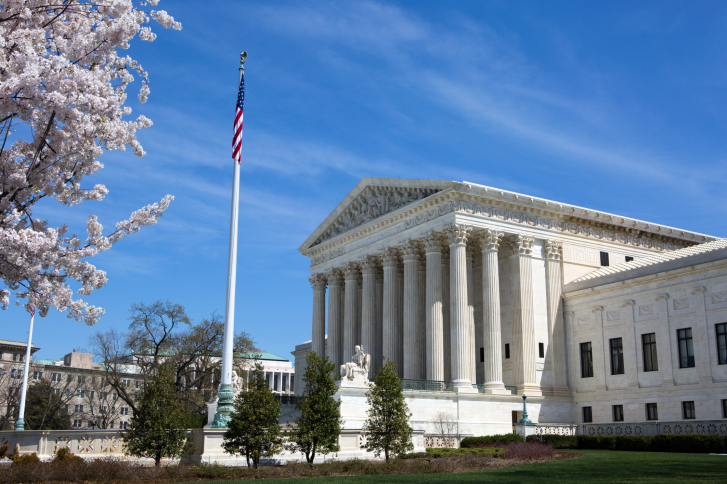Consumer Power Report #445
[Subscribe]
What a week this has been for Jonathan Gruber as a deluge of videos has illustrated his many public comments on the deceptions of Obamacare. Here’s an excellent supercut of the various comments from political supporters of Obamacare denying Gruber’s existence and relevance to the creation of Obamacare. Even as a handful of officials admit Gruber’s critical role in Obamacare’s framework and more, some on the left are still trying to deny his various manic and stupefying statements admitting his role in creating the legislation’s smoke and mirrors structure. Here’s Sean Davis:
Now, to their credit, they seem to finally understand how bad Gruber’s comments are for the pending Supreme Court case about the IRS rule. And his comments are damaging because they fly in the face of the government’s arguments about the absurdity of believing that the law meant to prevent subsidies from flowing through federal exchanges. But in one of his many videos, Gruber clearly states that what the government says is absurd is actually the precise outcome intended by those who designed the law: the federal government wanted all 50 states to establish exchanges. What better way to coerce them into doing that than by making federal subsidies contingent upon the establishment of a state change? What the Obama administration’s legal briefs say is absurd is exactly what the law’s architect said was the end goal …
I hate to break it to you all, but Gruber doesn’t get to be an architect of Obamacare and Romneycare when you want to use his authority and credentials to bash Republicans or spin for the law, and then radically transform into one of three Jon Grubers who just happens to live in Obama’s neighborhood once Gruber becomes a massive liability for the Left.
Gruber was one of the key architects of Obamacare. He didn’t just build econometric simulation models based on the law. He was also involved in drafting its key components. And he was paid enormous sums of money for his advice and counsel. These are facts. Accept them, learn to deal with them, and give the embarrassingly bad Gruber Truthing a rest.
What’s amazing about this denialism – on the part of the president and everyone else – is that, as Sen. Max Baucus acknowledges in the above clip, Gruber didn’t just design the framework of the law – Gruber also gave the Congressional Budget Office the model they used to score the law’s outcomes. Indeed, two of his graduate students worked on the scoring!
Two well-placed sources on Capitol Hill say that the Congressional Budget Office effectively used Jonathan Gruber’s model to score Obamacare. That model favors government mandates over market competition and claims that essentially the only way to achieve a large reduction in the number of uninsured Americans is to impose an Obamacare-like individual mandate. Moreover, because the model that the CBO used in scoring Obamacare is the same one it uses today, any alternative to Obamacare that doesn’t include an individual mandate – which is to say, any conservative alternative – would be scored by the CBO as falling well short, in terms of coverage numbers, of Gruber’s preferred legislation.
While the CBO’s model isn’t exactly the same as Gruber’s, one well-placed congressional source says that the two models are “eerily similar.” That source adds that, not only was Gruber one of the CBO’s academic advisors at the time that Obamacare was scored – a claim echoed by the Huffington Post – but two of Gruber’s graduate student protégés worked on the scoring. Gruber himself describes his model and the CBO’s as being “very similar.”
Gruber’s unfortunate honesty about Obamacare’s falsified process has attracted political attention. But what should they do about it? Here’s an idea: Subpoena Gruber’s code, software, and any and all documentation about the assumptions for his microsimulation model.
This was the basis of Gruber’s estimates, which were used by the Senate Finance Committee used to claim Obamacare would lower premiums. By opening this up, we can finally see how Gruber’s assumptions informed the Congressional Budget Office’s score, and it would allow external experts to compare Gruber’s modeling to their own assumptions about Obamacare’s performance. If you want transparency on fiscal predictions for health care reform, we need access to Gruber’s Black Box, which he has been selling at a hefty price to taxpayers in states across the country. That this subpoena would have the added benefit of making such a program open-source would be, let’s say, the price of Gruber’s deception.
— Benjamin Domenech
IN THIS ISSUE:
LIBERAL CONSTITUTIONAL LAWYER TAKES ON OBAMACARE:
When the Republican-led House voted to sue President Barack Obama in July over what the GOP considered his excessive application of executive authority, particularly in repeatedly delaying the implementation of the Affordable Care Act, it made a big splash. Nearly four months later, however, not much has happened. Some on the left assured themselves that delay was a result of confusion on the part of those who might represent Republicans in court over whether there was a basis to bring this lawsuit.
On Tuesday, however, that narrative changed. House Republicans hired constitutional lawyer and left-leaning scholar Jonathan Turley to represent them in their effort to force the president – a former constitutional scholar himself – to abide by the constraints placed on his power in the nation’s founding document.
“As many on this blog are aware, I have previously testified, written, and litigated in opposition to the rise of executive power and the countervailing decline in congressional power in our tripartite system,” Turley wrote on his blog. “I have also spent years encouraging Congress, under both Democratic and Republican presidents, to more actively defend its authority, including seeking judicial review in separation of powers conflicts.”
“For that reason, it may come as little surprise this morning that I have agreed to represent the United States House of Representatives in its challenge of unilateral, unconstitutional actions taken by the Obama Administration with respect to implementation of the Affordable Care Act (ACA),” he continued. “It is an honor to represent the institution in this historic lawsuit and to work with the talented staff of the House General Counsel’s Office.”
Turley is no conservative. He was a favorite of the liberal media during George W. Bush’s presidency, as he could be consistently counted on to deliver stinging indictments of the president’s conduct. Turley’s decision to prosecute the case against Barack Obama, a president for whom he twice voted, carries with it no less moral authority than did John Adams’s decision to stand in defense of those British soldiers responsible for the Boston Massacre. Turley’s action demonstrates that noble principle can still triumph over tribal political concerns.
SOURCE: Noah Rothman, HotAir
HEALTH BENEFITS FIGHT AT HARVARD
Last week, Harvard’s Faculty of Arts and Sciences – its most powerful faculty, according to the university’s governance structure – voted unanimously to ask President Draw Faust and the Harvard Corporation to halt planned changes to non-unionized employee benefits, including the introduction of coinsurance. Starting in January, faculty and non-unionized staff will have to shoulder annual deductibles of $250 per person, or $750 per family, and coinsurance for up to 10 percent of costs for hospital stays and other non-routine care. The annual out-of-pocket maximum is $1,500 for individuals and $4,500 for families.
The university has argued that in return for the changes, all employees’ monthly premiums will go down. For the first time, there is also an additional high-deductible plan linked to a health care savings account to give faculty members more flexibility. But faculty critics say the monthly premium decrease is nominal, and that the sudden introduction of coinsurance leaves the most vulnerable among them in a bind (currently, office visits cost $20 and emergency room visits cost $75). They say junior faculty members – especially those with children – and those with ongoing health concerns are especially at risk. And for everyone, they say, it’s a compensation – if not a pay – cut.
Mary D. Lewis, a professor of history who moved to ask the president and corporation to reverse the changes, described last week’s meeting as “standing-room-only.” She said the gathering was extended an hour to give various faculty members a chance to voice their opinions, and to hear counter-arguments from the administration. In the end, though, the simple motion – “that for 2015 the President and Fellows be asked to replace the currently proposed health care benefit plan with an appropriately adjusted version of the 2014 health benefit package, maintaining the 2014 plan design” – carried without a dissenting vote.
SOURCE: Colleen Flaherty, Inside Higher Ed
PricewaterhouseCoopers has issued a report on a survey conducted by its “Strategy&” subsidiary (formerly Booz and Company). The survey of over 2,300 U.S. residents is a hearty endorsement of consumer empowerment, so much so that the report’s first paragraph states –
“There’s a new boss in U.S. healthcare: the survey of 2,339 U.S. residents by Strategy&. The research paints a clear picture of a population displeased with its overall healthcare experience – and with rising expectations for transparency, value, and customer service, as well as a willingness to seek healthcare services from less traditional sources. The healthcare market as we know it is being upended, and the consumer is in the driver’s seat.”
The report has a lot of lessons for the next phase of health reform efforts. In particular –
People like shopping on Exchanges. They like private exchanges better than public ones – 73% said they are likely to stay with the coverage they selected on a private exchange, vs. 57% who said the same about a public exchange. Of course, staying with your current coverage may not be a good thing if the cost changes substantially, as seem to be happening on the public exchanges. While the bureaucrats are encouraging people to look around for the best deal each year, they seem to ignore the real problems with doing so – changing insurance plans every year is extremely disruptive to families and continuity of care. Under Obamacare, it means learning all over again what benefits are covered, what providers are included, what drugs are covered, how to file a claim, how to appeal a denial, how to locate customer service, and so on.
People are ready to try non-traditional sources of care. The report says –
“Consumers, particularly younger ones, increasingly expect healthcare to work the way other digital markets work, with user-friendly interfaces, clearly options designed to meet their needs. Their other buying experiences have made them more savvy and skeptical, and they want to know what they’re getting before they spend.”
Health care services are woefully behind in the transition to digital. While 80% of consumers said they would like digital services to help manage their care, only 23% said they currently have that.
The report also suggests that non-traditional providers such as retail firms like Target and tech firms like Google and Amazon have the potential to take “significant market share” as “consumers associate them with efficient, effective, and delightful customer experience.
SOURCE: Greg Scandlen, Real Health Reform
More than half of insured Americans still get their coverage through the workplace, though the rate has been declining over the past decade. Drivers for Uber are classified as independent contractors, so the company does not offer them insurance.
[Uber cofounder Travis] Kalanick’s comments highlight one of the arguments that supporters of the Affordable Care Act make for the law. By making it easier and more affordable for people to buy health insurance coverage on their own, people won’t have to stay in jobs they don’t want just for the health benefits.
This concept is known as “job lock,” and we have some idea just how prevalent it is. About 27 percent of employees cited workplace health insurance as the main reason for staying in their jobs or not retiring, according to 2004 survey from the Employee Benefit Research Institute. A 2008 Harvard Business School study found about 11 million people stayed in their jobs just for the health insurance.
For a company like Uber, this also isn’t just about people not having to stay in jobs they don’t like to get health care. It’s also about people being able to take jobs they do like that don’t provide health care.
But there’s also flipside to Kalanick’s argument. By not paying for employees’ health insurance, Uber saves tons of money, just as it also cuts costs by putting the costs of car ownership onto its drivers. The whole issue of how Uber treats its drivers lies at the heart of class action lawsuits filed in California and Massachusetts courts over the summer. The suits argue that Uber improperly classifies its drivers at independent contractors, when they should be counted as full employees entitled to employer-provided benefits, including health insurance.
SOURCE: Jason Millman, Washington Post
IS THE COMING PHYSICIAN SHORTAGE A MYTH?
Although there is general agreement that the U.S. needs more providers entering the industry, they do not all necessarily need to be doctors, Health Economist Gail Wilensky told NPR.
Nonphysician primary care providers such as physician assistants, nurse practitioners (NPs), social workers and pharmacists working under a team-based care model could fill many anticipated gaps in care she said. Indeed, team-based care is widely thought to be more cost-effective, according to the article. Moreover, research shows easing scope-of-practice laws for NPs can ameliorate the primary care shortage, FierceHealthcare previously reported. In April, New York became the 18th state to expand NPs’ authority to practice independently.
“What will we allow nurses to do – work up to the limits of their license?” Wilensky told NPR. “Work up to the limits of their training? What will we allow pharmacists to do? Those together would determine how many physicians it would be useful to have around.”
The Association of American Medical Colleges predicts that the nation will need more than 90,000 doctors by 2020. But Wilensky cited previous studies predicting primary care shortages that turned out to be inaccurate, sometimes projecting a surplus that turned out to be a shortage or vice versa.
Furthermore, training doctors is a major cost to the healthcare system, Fitzhugh Mullan, M.D., of George Washington University told NPR, and the industry has a vested interest in fearmongering about a shortage. “The business model of an interest group is to create a sense of crisis,” he told NPR, “and then tell their constituents, ‘We can help you.'”
However, hospitals and other healthcare providers’ inability to recruit more physicians may impact their bottom lines in coming years. Hospital executives are becoming concerned about the issue, according to Fortune. “It’s not a surprise. We’ve been talking about (physician) shortages for quite some time,” said Mike Alkire, chief operating officer for Premier, which recently published a survey on hospital concerns. “There’s pressure on a market that has a small supply, and it’s having financial implications.”
SOURCE: Zack Budryk, Fierce Health Care
STUDY: DRUG DEVELOPMENT COSTS 2.6 BILLION
Developing a new prescription medicine that gains marketing approval, a process often lasting longer than a decade, is estimated to cost $2,558 million, according to a new study by the Tufts Center for the Study of Drug Development.
The $2,558 million figure per approved compound is based on estimated:
Average out-of-pocket cost of $1,395 million
Time costs (expected returns that investors forego while a drug is in development) of $1,163 million
Estimated average cost of post-approval R&D – studies to test new indications, new formulations, new dosage strengths and regimens, and to monitor safety and long-term side effects in patients required by the U.S. Food and Drug Administration as a condition of approval – of $312 million boosts the full product lifecycle cost per approved drug to $2,870 million. All figures are expressed in 2013 dollars.
The new analysis, which updates similar Tufts CSDD analyses, was developed from information provided by 10 pharmaceutical companies on 106 randomly selected drugs that were first tested in human subjects anywhere in the world from 1995 to 2007.
“Drug development remains a costly undertaking despite ongoing efforts across the full spectrum of pharmaceutical and biotech companies to rein in growing R&D costs,” said Joseph A. DiMasi, director of economic analysis at Tufts CSDD and principal investigator for the study.
He added, “Because the R&D process is marked by substantial technical risks, with expenditures incurred for many development projects that fail to result in a marketed product, our estimate links the costs of unsuccessful projects to those that are successful in obtaining marketing approval from regulatory authorities.”
In a study published in 2003, Tufts CSDD estimated the cost per approved new drug to be $802 million (in 2000 dollars) for drugs first tested in human subjects from 1983 to 1994, based on average out-of-pocket costs of $403 million and capital costs of $401 million.
The $802 million, equal to $1,044 million in 2013 dollars, indicates that the cost to develop and win marketing approval for a new drug has increased by 145% between the two study periods, or at a compound annual growth rate of 8.5%.





